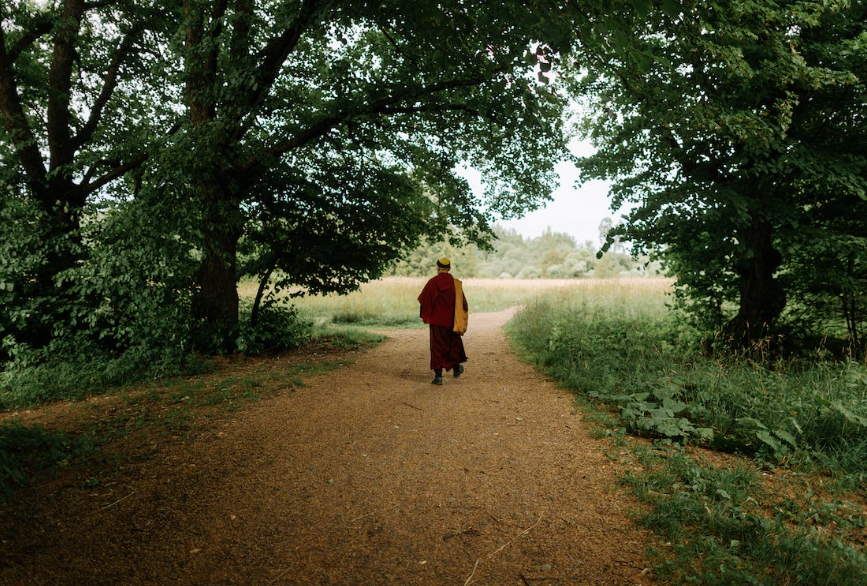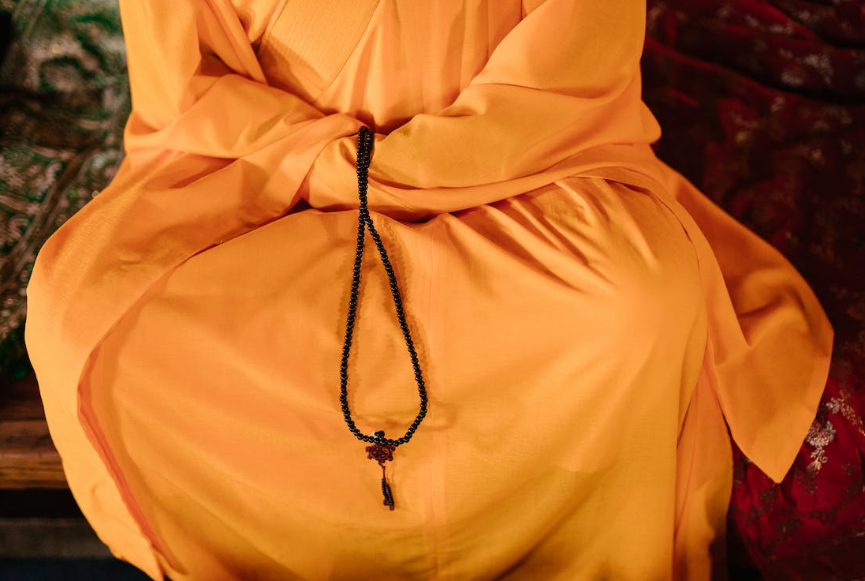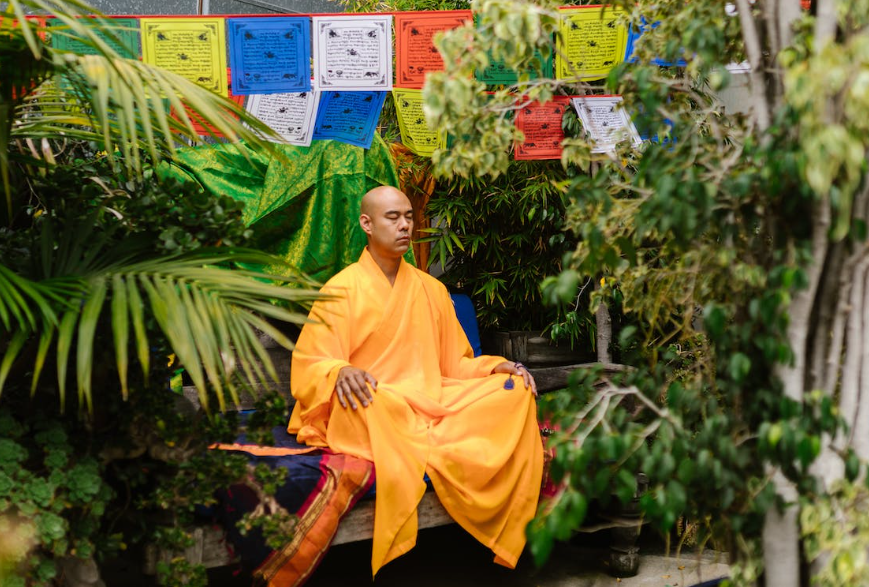The People Who Brought Mindfulness to the West
How Thich Nhat Hanh pioneered modern mindfulness in the West. Exiled from his homeland by war, the Vietnamese monk left a lasting impact on Western culture by teaching the Buddhist philosophy of mindfulness.

Selfpause Affirmation App
Download the app to get 1,000’s of affirmation meditations and everything you need to write, record and listen to your own.
The Buddhist teacher Thich Nhat Hanh is credited as the person who brought mindfulness to the West. However, this practice had its roots in the Eastern tradition. For his political activism, he was banned from his native Vietnam and spent nearly four decades in exile. In the end, he died at the Tu Hieu Temple in Hue. His organisation that teaches Zen is called the Plum Village Community of Engaged Buddhism.
Thich Nhat Hanh

The late Thich Nhat Hanh brought mindfulness to western culture through his teachings. He was an exile from Vietnam during the Vietnam War and spent the last half of his life in France, where he held mindfulness workshops and lectured about the benefits of slowing down our thoughts. His teachings were based on the idea that we can practice mindfulness anywhere, anytime, and they help us live a more meaningful and peaceful life.
The former Buddhist monk, Thich Nhat Hanh, was exiled from his native Vietnam after calling for the end of the Vietnam War. He spent nearly four decades in exile in France where he created retreats around the world. In his life, he wrote more than 100 books, and his influence on the global wellness industry is immense.
His teachings were so powerful that they transformed the lives of countless people. He was a pioneer who introduced Buddhism to the west and established eleven monasteries and dozens of practice centers. His teachings were adopted by lay people and applied in schools, prisons, and businesses.
In the 1960s, Thich Nhat Hanh taught at Princeton and Columbia universities. In 1966, he met Martin Luther King and joined the call for an end to the Vietnam-American war. He refused to take sides in the conflict and was persecuted by both North and South Vietnam. In the following years, he spent the rest of his life in France, where he advocated for the freedom of religion throughout the world.
Eastern roots of mindfulness

The practice of mindfulness originated in Eastern Buddhism and has since crossed cultures to gain a large following in the west. Although it originated as an alternative to mind/body medicine, it has since expanded into many other fields, including psychology and medicine. In this article, I examine the origins and secularisation of mindfulness practice, as well as its development into mainstream interventions. In addition, I discuss the differences between Eastern and Western ontologies in relation to the concepts of self and experience, as well as the difficulties that Western practitioners face when they try to incorporate mindfulness into their research and intervention processes.
One key difference between Eastern and western mindfulness is the emphasis on the true self, or spirit. Western mindfulness practices lack many of these elements and are focused on achieving measurable goals instead of experiencing life-changing benefits. For example, western mindfulness practices are not as flexible as their eastern counterparts. As a result, the approach used by western practitioners can sometimes be ineffective for achieving life-changing results.
In addition to its religious roots, the practice of mindfulness is increasingly popular as a way to deal with stress. It involves paying attention to the present moment with nonjudgmental awareness. Most people have heard of mindfulness through Buddhism or Hinduism, but it is practiced in many other traditions. A more modern example is Brother Lawrence, who emphasised awareness of the Holy Spirit while writing about the practice of mindfulness.
George Mumford

George Mumford is an NBA-sized man with giant hands and a calming presence. He brought mindfulness to the NBA by training Michael Jordan and Scottie Pippin. While he could not use the word “mindfulness” himself, he found ways to flip these triggers and create peaceful responses.
During his high school years, George Mumford was a drug addict. He struggled with injuries that caused him to use drugs. But he never gave up on his dream of playing basketball. His struggles with drugs and alcohol eventually led him to a successful career as a financial analyst. After he retired from the NBA, he went on to mentor the Chicago Bulls. His approach helped the players and the organization thrive.
Since the late 1990s, published research on mindfulness interventions has exploded. Now, over 18 million people in the United States practice some form of mindfulness. And 44% of companies offer mindfulness training. So why not take a look at how these techniques can change your life? A few simple steps will make all the difference in your life.
Phil Jackson is a strategic genius on the court, but he also uses mindfulness to maintain his edge. The NBA coach, Phil Jackson, hired Mumford as a stress expert in 1993. He has worked with many of Jackson’s teams. Currently, his clients include corporate executives and athletes from many different sports.
Jack Kornfield

Jack Kornfield studied as a Buddhist monk in India, Burma, and Thailand. Since 1974, he has taught meditation internationally. He co-founded the Spirit Rock Meditation Center in Northern California. The center is located about 20 miles north of San Francisco. Kornfield has a bushy mustache, large ears, and a fatherly presence.
Jack Kornfield is an American psychologist and meditation teacher who trained in India, Thailand, and Burma as a monk. He holds a Ph.D. in clinical psychology and co-founded two of the largest Buddhist centers in the west, the Insight Meditation Society and Spirit Rock Meditation Center. He has taught meditation for more than 40 years and is now recognized as one of the most influential teachers of mindfulness in the western world.
Meditation retreats at Spirit Rock are modeled after Asian monasteries, and require the participants to sit in silence for up to fourteen hours a day. During this time, the only breaks are for simple meals and talks from the retreat leader. The accommodations are modest but comfortable. The program is less rigorous than those offered at Buddhist monasteries, but the retreats do help participants become more aware of the present moment.
Meditation originated in the East and gained popularity in the West after Jack Kornfield brought the concept to the West in 1975. It is closely related to yoga and Hinduism, and is closely related to both. Kabat-Zinn is one of the most influential figures in the Western world and one of its greatest proponents. His groundbreaking research on the connection between mindfulness and science has helped make it widely available in the West.
Sharon Salzberg

Sharon Salzberg, a New York Times bestselling author and world-renowned meditation teacher, helped bring meditation from its Eastern roots to the West. She co-founded the Insight Meditation Society in Barre, Massachusetts, in 1974, and is the co-founder of its first retreat center. Salzberg is the author of over ten books, including Real Happiness and Lovingkindness. She also hosts her own podcast and is a frequent speaker at conferences.
Sharon Salzberg was born in New York in 1952. As a child, her parents broke up, and she spent her adolescence with her paternal grandparents. When she was 11, her father was rushed into a hospital after taking drugs. While she was at Buffalo State University, Salzberg became interested in Asian philosophy, and later became fascinated with Buddhism.
Salzberg’s work has reached a worldwide audience. She teaches various meditation practices and focuses on two types of meditation. These include vipassana meditation and loving-kindness meditation. These are derived from ancient Buddhist teachings. Salzberg’s meditations address the wide range of human experience, offering practical outlets for contemplation.
After studying the Eastern tradition of meditation, Salzberg translated it into a more Western audience. She also made an effort to integrate Eastern philosophy with Western science. This led to the development of Mindfulness-Based Cognitive Therapy (MBSR). As a result, mindfulness has become widely accepted in Western society.
Joseph Goldstein

Joseph Goldstein, a leading teacher of meditation and the founder of the Insight Meditation Society, brought mindfulness to the west in the early 1970s. Goldstein also co-founded the Barre Center for Buddhist Studies and the Forest Refuge, and is widely recognized as one of the leading Buddhist teachers of our time. He is the author of several books, including Mindfulness: A Practical Guide to Awakening.
Goldstein is an experienced teacher of Vipassana meditation and one of the foremost Vipassana teachers in the United States. He co-founded the Insight Meditation Society and the Barre Center for Buddhist Studies with Sharon Salzberg. Goldstein is also the author of several books, including A Heart Full of Peace, One Dharma: An Emerging Western Buddhism, and The Experience of Insight. He discusses mindfulness as an inward-looking process of awareness.
The West was first exposed to mindfulness in the 1970s, after Kabat-Zinn and Sharon Salzberg first introduced it to academics and physicians. They eventually established the Center for Mindfulness at the University of Massachusetts Medical School. Since then, mindfulness has been brought to many institutions, including schools, hospitals, and medical centers.
Our Top FAQ's
One of the first individuals to introduce mindfulness practices to the Western world was Jon Kabat-Zinn, who founded the Stress Reduction Clinic at the University of Massachusetts Medical School in 1979. He developed the Mindfulness-Based Stress Reduction (MBSR) program, which utilizes mindfulness techniques drawn from Buddhist meditation practices to help individuals cope with stress, pain, and illness.
Kabat-Zinn learned about mindfulness through his studies of Eastern philosophy and his own personal meditation practice. He was motivated to bring mindfulness to the Western world in order to help individuals manage stress and improve their overall well-being.
Mindfulness practices have been adapted and modified for Western audiences in a number of ways. For example, the MBSR program has been modified to be more accessible and relevant to Western audiences, and has been widely disseminated through books, videos, and other media. In addition, mindfulness practices have been incorporated into a range of settings, including schools, hospitals, workplaces, and sports teams, and have been adapted to fit these specific contexts.
The individuals who have brought mindfulness to the Western world, such as Jon Kabat-Zinn, have had a significant impact on the widespread adoption of mindfulness in the Western world. Their efforts have contributed to the development of a thriving mindfulness industry, with a wide range of mindfulness products and services available to the general public.
The incorporation of mindfulness into Western society has affected the way it is practiced and understood in its original Eastern contexts in a number of ways. Some argue that the commercialization and commodification of mindfulness practices in the Western world has led to a dilution of their original meaning and significance. Others argue that the spread of mindfulness to the West has helped to raise awareness of the benefits of mindfulness and has made it more accessible to a wider audience.
